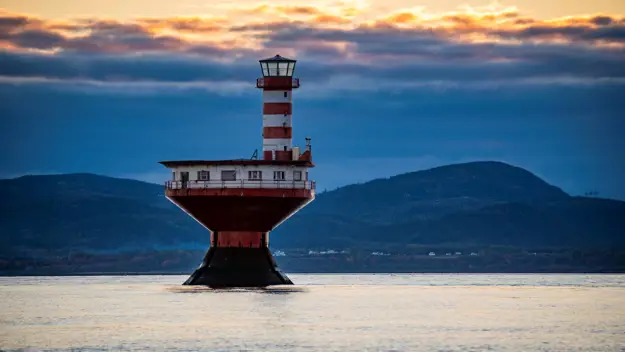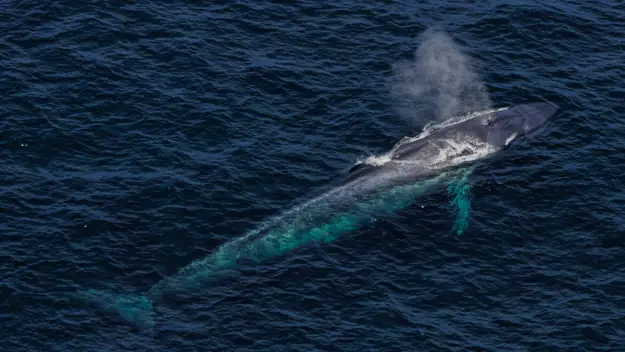Discover Montreal, our metropolis rich in entertainment for everybody.
Guided Tour of Montréal
The city of Montreal was founded in 1642 by Paul Chomedey de Maisonneuve, noble soldier, and Jeanne Mance, instigator of the expedition and nurse looking to build a hospital in the region. They establish the foundations of Ville-Marie which will then become the city known today.
Did you know that the St. Lawrence River is one of the longest in the longest rivers in the world?
The St. Lawrence River takes its source from the Ontario Big Lakes, located 300 kilometres away from the west of Montreal. The St. Lawrence is divided into the river itself, the estuary and the gulf. From its mouth in Lake Ontario, near Kingston to the Atlantic ocean, the river spans over 1900 kilometres in length. If we add to it the length of the Big Lakes, it amounts to 4000 kilometres in total. Needless to say that this vast body of water is fundamental when it comes to Canada's economy.
The further the river is explored, the more shallow it becomes. Bodies of water in Montreal are more shallow than Quebec City. From Trois-Rivières to Montréal, the depth of the river is between 3 and 7 metres. The river has been dug up a few times to allow the crossing of bigger cruise or merchandise ships. The river is now around 11.3 metres-deep, therefore limiting certain ships who wish to access the city. While the tide is strong in a few areas of the river, it is barely there in Montreal.
The river near the city is composed of freshwater, becoming salty only 300 kilometres east, which is why it freezes during winter. Icebreakers are used since the 1960's to allow cargo ships to cross all year-long. Before that, the Port of Montreal would be closed and merchandise coming towards this destination would have to stop by Halifax before arriving by train. The Port's activities would resume during spring.
Port of Montreal
The port, located east of the Jacques-Cartier bridge, is part of the local economy since the 1960's. Piers, still in constant construction, were built between the 1960's and the 1980's.The port remains one of the most important inland harbors in the world and is the second biggest of Canada, after Vancouver.
Geography, Climate, Society
Geography
The city of Montreal is an island. It 50 kilometres-long and 16 kilometres-wide and counts 16 municipalities populated by 2 million people. Montreal itself is the biggest municipality with over 1,7 million residents while Dorval is the smallest with only 5 residents. The urban region counts 4 million residents which represents half of the province's population in total.
Climate
Montreal has a humid continental climate with high thermic range resulting in cold and snowy winters as well as humid and warm summers. The coldest month is january with an average between -6 and -15 Celsius degrees. The warmest month is july with an average that vascillates between 16 and 26 Celsius degrees.
The cold weather record dates back to january 1957 where a temperature of -37,8 degrees was registered while the warm weather record was during august 1975 with a temperature of 37,6 degrees. The most important snowstorm dates back to 1971 when 50 centimetres of snow were registered.
Society
80 different ethnic groups live in Montreal. The current city's background is mostly influenced by the French who first explored and the British, who then colonized it. Natives were also living in the land long before Europe colons arrived and our american neighbours also influenced highly the city.
Nowadays, more than 50% of the city's population claims french as its first language while 14% are english speakers. The other 25% represents other languages altogether. 60% of the local population considers itself bilingual.
Aerospatial represents one of Montreal's economical pillars, with life sciences and health technologies. Information and communication technologies, from softwares, telecommunication to videogame creation and special effects, is another major economic source.
Universities, 11 in total, and colleges are also another important part of the city. Four reknown universities can be found in Montreal, counting 200 000 students in total. In 2017, Montreal has been deemed the best city for student life by the QS World University Rankings.
Main attractions
Hochelaga Archipelago and the Islands of Boucherville Park
The city island is part of a vast archipelago covering the territory confluent to the St. Lawrence River, from the south and the Outaouais region, from the north. The Hochelaga archipelago refers to the Native village discovered by Jacques Cartier in 1535. This archipelago counts more than 300 islands. The biggest of the lot cover around 10 kilometres in length while the smallest ones are barely visible on a map.
The Islands of Boucherville can also be found there. Their national park has a large fauna diversity divded into earthly, aquatic and semi aquatic environments. Amongst its species, you can find 200 Virginia stags, many red foxes, beavers, 45 species of fish and around 240 species of birds.
Notre-Dame Basilica
Located in the Old Montreal, this church is considered as an architectural jewel. Inaugurated in 1829, the church can greet 3000 people. While the outside of the church is impressive, the beauty inside is like none other.
Bota Bota
First serving as a ferry between Sorel-Tracy and Berthier until 1967, then as a theater on the Richelieu for 40 years, this black boat at the entrance of the Lachine channel became the Bota bota scandinavian spa in 2010. It includes warm and cold baths, saunas and massages, as well offering a wonderful view of downtown and the Vieux-Montréal.
Brasserie Molson
The Molson brewery, founded in 1786 by John Molson, is the oldest in North America. Its 2005 merge with Coors made it become one of the ten most important breweries in the world. With more than 230 years in the business, the Molson family also established itself with the building of the first steam ship in Canada in 1809 and helped finance the first canadian railway as well as the construction of the Victoria bridge, inaugurated in 1860.
The Molson family is also behind the construction of the first theater and public hospital of the city. They also became the owners of the Molson Bank. The family, as well as being active in their community, still manages the brewery nowadays. They also own the Montreal Canadiens Hockey Club, considered the oldest active team in the world.
Iberville Maritime Harbor and Alexandra Pier
Open since summer 2017, the Iberville Maritime Harbor has been important when it comes to florourishing of international cruises. In 2016, for example, around 86 000 passengers and ship crews passed through Montreal, resulting in million of dollars. Montreal is the fourth most prized canadian destination when it comes to cruises, after Vancouver, Halifax and Quebec.
La Ronde
This amusement park has been entertaining families since its inauguration during the Expo 67. It now counts over 40 rides and has one of the oldest wooden rollercoaster in the world. It is easy to access via subway and and is the second biggest amusement park in Canada. La Ronde is also where the International Loto-Québec Fireworks also take place every year since 1985.
Bonsecours Market & church and City Hall
The Bonsecours Market is a multifonctional building inaugurated in 1847. It first served as a public market, it then became city hall, a police station, an administrative center, an exhibition center as well as being home to the Canadian Parliament for a few weeks in 1849. Nowadays, it is a public market where you can find many craft boutiques, designer stores as well as restaurants, bars and exhibition galleries. Nearby, you can also visit the Notre-Dame-de-Bon-Secours chapel, founded in the 17th century by Marguerie Bourgeois, Montreal's first teacher.
Mont-Royal
The Mont-Royal is a mountain with a height of only 233 metres. Jacques-Cartier named it as such, in honor of the French king François the first. Montreal comes from the mispronounciation of the same name.
Most of its territory can be accessed by the public. On the mountain, you can find cemetaries as well as many institutions such as universities, hospitals and 25 000 seat-stadiums where teams like the Montreal Alouettes play. It is also where you can find the famous Mont-Royal park, frequently visited by locals. The park was built around the vision of the american landscaper Frederick Olmsted, also behind New York's central park.
Jean-Drapeau Park
Jean-Drapeau Park, also known as the Parc des îles, is divided into two islands: Sainte-Hélène and Notre-Dame, a vast urban park appreciated by locals and tourists. Jean Drapeau was the city's mayor for 30 years and is behind important city projects such as the subway, the 1976 Olympic games and the Expo 67. His statue is even standing in front of City Hall.
Jacques-Cartier Bridge
The Jacques-Cartier bridge is one of the most iconic sights of the city since its inauguration in 1930. With its length of 3.4 kilometres, the bridge has five tracks for cars, one track for bikes and one for pedestrians. Over 30 million vehicles cross it every year, making it the second busiest bridge in Canada. To comemmorate the city's 375th birthday, the bridge started lighting up at night.
Pratt & Whitney and the aerospatial industry
Longueuil is home to one of the biggest factories in Canada, Pratt & Whitney. Founded in 1928, this industry specializes in fabrication and maintenance of business jet aircrafts, transportation planes and helicopters' motors. The aerospatial industry is one of the major economical players in the region providing 40 000 jobs, amongst 200 enterprises. Other important industries in the field also established themselves near the city, such as Bombardier, Bell Hélicoptère, CAE and the Canadian spatial agency.
Bellerive Promenade
This promenade is a park stretching over two kilometres alongside the river. It links four different parks and is a rare place where locals can enjoy a direct access to the river. It is amongst one of the 19 parks found on the city's territory, Mont-Royal and Jean-Drapeau parks being the most famous ones.
Bickerdike Pier
The Bickerdike Pier is mainly used to give provisions to the Newfound Lands. The Oceanex Connaigre and the Oceanex Avalon navigate between Montreal and the Port of St. John's, two times per week, 52 weeks per year, no matter the weather. They transport close to 50% of the Newfound Land and Labrador population's needs. During summer, it also greets the CMTA Vacancier, a cruise ship guiding tourists towards the Magdalen Islands.
Horloge Pier
This pier is home, since 1922, to a tall white tower, sporting a giant clock on every side. It marks the entrance of the Old Port but it is also serves a commemoration of the canadian sailors who perished during the two World wars. During the touristic season, you can climb its 192 steps and reach its apex to admire the incredible view it gives on the Old Port.
Olympic Stadium
Looking like a space ship, the Olympic Stadium is an architectural wonder. Built for the 1976 summer Olympic games, this gigantic white structure has marked the lives of millions of athletes, journalists, audience members, coming from all around the globe. The stadium can greet up to 60 000 audience members. Its tower, supported by cables, is the tallest one with a height of 165 metres and an inclination of 45 degrees.




